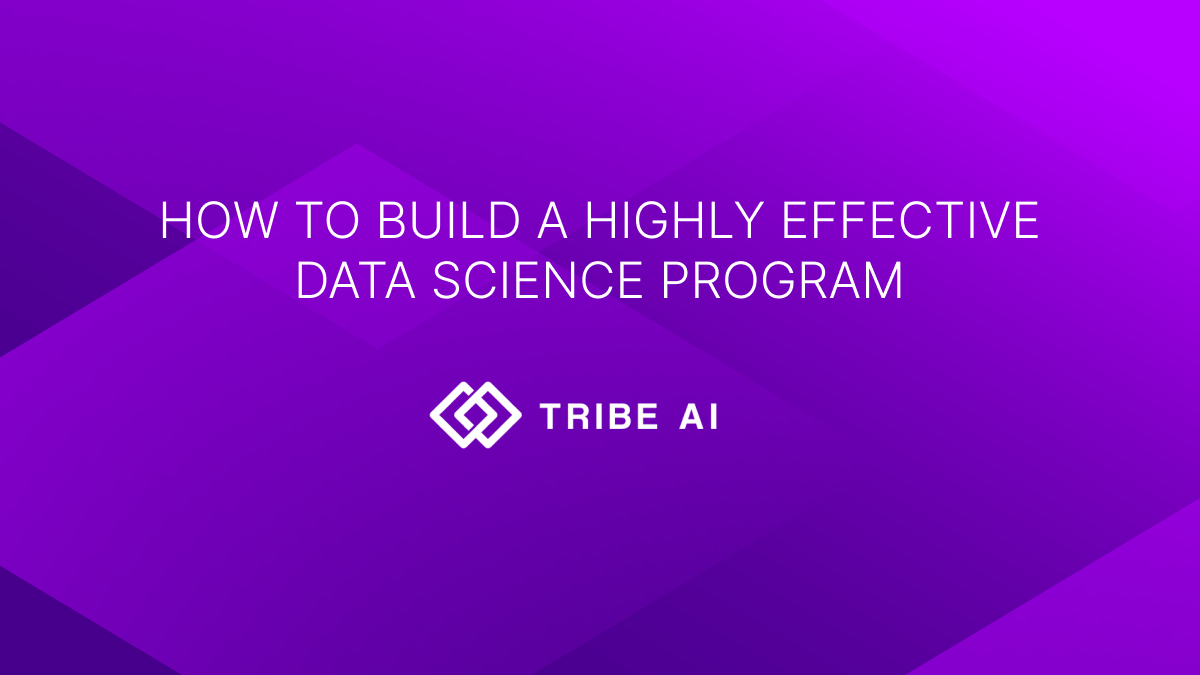A successful investor has to cut through the hype by focusing on fundamentals to evaluate a company’s potential for long-term growth. But what happens when a new technology like generative AI disrupts existing frameworks for evaluation? Suddenly, it’s a lot more difficult.
Generative AI represents a paradigm shift for many businesses. For some companies, it will enhance existing products, for others it will enable entirely new ones. Clearly, this is an exciting area for venture capitalist (VC) investment. However, as with any new technology, it can be challenging for investors to cut through the hype and assess the true value of potential investments.
Through Tribe, I have had a number of advisory calls with VC firms (and even had some of our friendly neighborhood VCs over for dinner to talk Generative AI). What follows is one framework I’ve found particularly useful in helping VCs navigate opportunities in the generative AI landscape – for both future investments and current portfolio companies. It’s reductive, but also useful first step in understanding how a business fits into a framework of generative AI adoption.
Toward that aim, this article will:
- Categorize generative AI companies into three groups – model builders, model consumers, and vertical model players
- Give examples of how to apply this framework to existing companies
- Show how a new company could build a defensible moat by progressing from one category to another
The goal is not to be exhaustive – putting anything into broad categories is necessarily reductive – but to give investors a framework to help recognize disruptive companies.

Model Builders
These companies have access to vast amounts of capital, compute, data, and specialized talent. They are typically leading the way when it comes to model capabilities. They often publish their findings in academic research and in polished marketing content. Many of their staff are researchers and engineers building systems to train and deploy large models. Many companies in this category have an API or provide models as a service.
The path to monetization with these groups is through usage-based billing, subscriptions, and partnerships with large organizations. These three prongs of business strategy give a large surface area for growth and market capitalization.
These groups typically rely on existing hardware and cloud providers for their computational needs which necessitates large and structured partnerships.
The main benefit of these groups is their ability to draw value from the entire Generative AI landscape. They serve as a type of orchestration layer for the rest of the community to build on. However, they themselves rarely build products on top of their own models.
There is a somewhat large risk, however, that they will be unable to continue the pace of innovation and end up with competitor models or open source models catching them in terms of capabilities. The necessity of continued R&D makes these organizations attractive for talent but expensive to maintain.
Examples: OpenAI, StabilityAI, Co:here
Model Consumers
These companies are typically started with minimal barriers to entry. They consume models from open source providers and Model Builders. They can quickly iterate with customers to provide novel user interfaces and user experiences. These have historically been consumer facing products that quickly generate hype in the media.
Oftentimes, however, we find that companies in this category have low defensibility and high churn. The double-edged sword of easy entry means that at the first sign of traction, many competitors will rush to build copy-cat services and eat away at the original company’s growth. Additionally, there is a potential risk building your core business on someone else’s API without an exit strategy. This is different from building on the public cloud today, simply because the norms in the industry are not yet established.
The goal of many of these companies is to generate enough traction to gain a defensible market positioning with brand and marketing efforts. They can then translate this into a data moat which allows them to fine-tune the open source or Model Builder provided models to higher levels of performance.
Many of these companies will follow standard monetization strategies such as being subscription based, ad supported, or potentially having enterprise deals.
The benefit of these companies is the low capital costs for an initial go to market. The speed at which they can innovate on the existing models allows them to experiment with novel products that users might find quite valuable. This iteration process has a natural conclusion with the companies attempting to train their own models and potentially break free from the risky dependence on external providers. However, with proprietary prompts, data for fine-tuning, and product savvy many of these companies can make a splash very quickly in the Generative AI field. The long term aim of these groups is likely to start to bring some of the expertise in-house while capturing significant market share in the process.
Vertical Model Players
These companies have access to sufficient compute, talent, data, and capital to train their own specialized models. They will then build a dedicated product on top of their own models. The models may not be as powerful as those from the Model Builders, and the speed of development may be slower than the Model Consumers, but the control over the entire Generative AI stack enables truly novel products and reduces competitor risk.
These companies typically start with open source models or frameworks, but quickly transition to building custom systems and solutions internally for training their models. They also have product-savvy players in the company that know how to gather user feedback and create delightful products.
A potential benefit to companies in this category is the ability to build with more than a single modality without being limited to the existing models on the market. For example, if a company wants to build a novel image compression system to save bandwidth for streaming services or if they want to interact with a dedicated piece of design software, they will likely need to build their own models trained on proprietary data with a proprietary product.
The monetization route for this follows the Model Consumer group since both groups are building end products. The need for growth in the Vertical Model Players may be slightly higher due to the increased capital costs required for improved defensibility.
These companies are far more defensible than some other Generative AI companies, but still can be disrupted if they fail to capitalize on their novel product with a failed go to market attempt. In general, we expect more companies to emerge in this category with a lot of value being generated here. So let’s walk through a hypothetical example of what a company making a highly successful vertical Generative AI play could look like.
Constructing a Defensible Moat – an Example
Imagine a company EduSynth which is seeking to disrupt post secondary education. They understand the continued need to re-skill and educate for the general population. They want to build a personalized learning service that enables their customers to master a new subject. This idea has been attempted in the past, but with new Generative AI technologies - it is more likely to succeed.
EduSynth starts by building a web interface with a number of interesting, human-designed, courses. These may include some about Programming, Marketing, AI development, Art, or Video Editing. In parallel, they are training a chat based model to summarize students’’ answers and explain where they may have gone wrong.
They use a powerful open-source model FlanT5 and a proprietary dataset. They do intensive fine-tuning on the model and build infrastructure to serve it to their many customers.
While this is happening, they are training a speech and video model to provide comfort and personalization to their customers. All the while, they are collecting feedback on students’ learning progress, satisfaction, and general performance in their courses.
Over time, their systems develop to have multiple custom models interacting with students at various levels of the product. These models could be suggesting new content, correcting essays, explaining ideas, and personalizing feedback directly to the students.
EduSynth started as a Model Consumer and quickly made the transition to a Vertical Model Player while marketing, building their product, and collecting user feedback. This is a natural path for many companies to follow in Generative AI to make use of the benefits of existing models while also constructing a defensible moat.
The Future of Generative AI
This paradigm shift is an exciting moment for AI startups. There are so many opportunities across industries for founders and investors to build new products and improve existing ones. No matter what framework you use to evaluate it: the future is bright.
Andrew Carr is a senior applied research scientist at Gretel AI, an industrial generative AI company focused on synthetic data and privacy. He has worked in machine learning and AI for 8 years in various roles at Google Brain, OpenAI, and his own legal tech start up.
Images: Generated using Midjourney
Contributors: Bailey Seybolt












.png)




.png)
.png)


.png)
.png)



.png)

.png)


.png)


